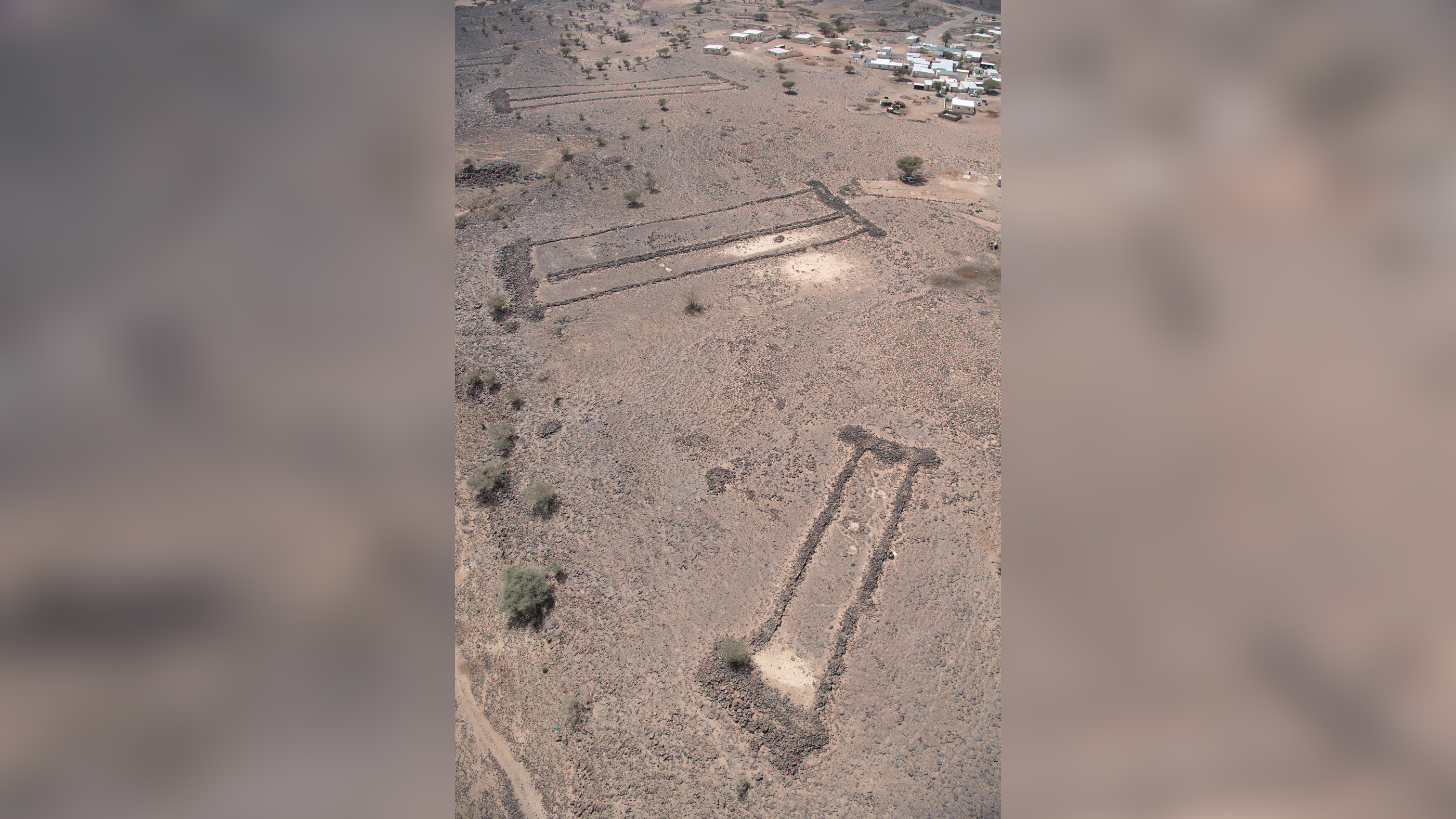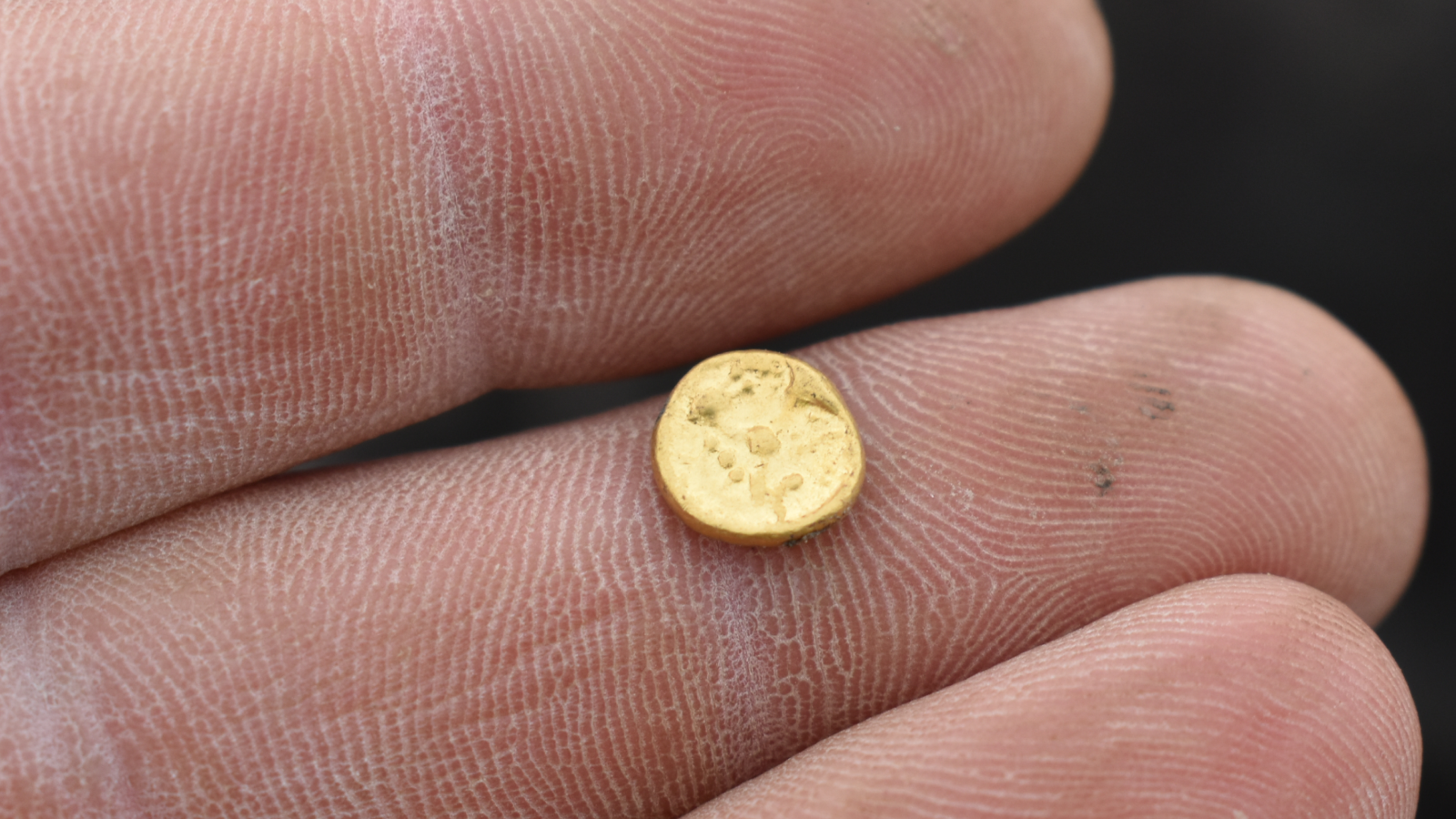Mysterious 7,000-year-old stone structures may be part of prehistoric cattle cult

Sprawling rectangular structures scattered across northwest Arabia and dating back more than 7,000 years may have been part of a prehistoric cattle cult, researchers have found.
More than 1,000 of the mysterious structures, referred to as mustatils (an Arabic word meaning "rectangle"), have been documented in Saudi Arabia. While their appearance varies, they are usually rectangular in shape and often consisting of two platforms connected by two walls. Archaeological work indicates that some of the mustatils had a chamber in the center made of stone walls surrounding an open area with a standing stone in the center.
Related: See photos of the mysterious stone structures in Saudi Arabia
The new research reinforces a theory proposed by other researchers that the mustatils had a ritualistic purpose and, in addition, provides evidence that they were part of a cattle cult.
"The mustatils of northwest Arabia represents the first large-scale, monumental ritual landscape anywhere in the world, predating Stonehenge by more than 2,500 years," Melissa Kennedy, assistant director of the Aerial Archaeology in the Kingdom of Saudi Arabia project (AAKSA), said in a statement.
"These structures can now be interpreted as ritual installations dating back to the late sixth millennium B.C., with recent excavations revealing the earliest evidence for [a] cattle cult in the Arabian Peninsula," a team of researchers wrote in a paper published April 30 in the journal Antiquity.
The team's research revealed "that these monuments are architecturally more complex than previously supposed, featuring chambers, entranceways and orthostats [upright stone slabs]," the team wrote in the article.
Get the world’s most fascinating discoveries delivered straight to your inbox.
Arabia excavations
Some of the mustatils have been looted or damaged but in 2019, the team was able to excavate a mustatil that was undisturbed. They found that it contained a large number of cattle bones and horns as well as remains from sheep, goat and gazelle. These remains were found in the center of a chamber —which was constructed with stone walls — beside a large upright stone, leading the team to believe that they were "offerings" from people participating in ritual activities associated with a cattle cult; this cult may have been dedicated to deities or supernatural forces associated with cattle.
Given that writing had not been invented at that time, researchers aren’t sure precisely the beliefs of such cattle cult followers.
People may have made their way to the chamber through a procession. "The architecture of these mustatils suggests that their use involved an element of procession. Their narrow entranceways indicates that the structures were accessed in single file," the team wrote in the Antiquity article.
Related: Photos: Aerial views of ancient stone structures in Saudi Arabia
The archaeologists also found rock art in the area and from the same time period that supports the idea that the mustatils were used as part of a cattle cult. The rock art shows "scenes of both cattle herding and hunting," the team wrote.
The structures are so large and prominent in the landscape that a ritual function seems likely, the researchers said. In addition, the long walls are no higher than 1.6 feet (0.5 meters), meaning the structures couldn't have functioned as animal pens, they said. They

Environmental clues
The discovery of cattle bones and horns inside the mustatils adds to evidence that the environment in the region was wetter around 7,000 years ago than it is today.
"The environment was certainly much more humid during this period, we know this from palaeoclimatological data gathered from across the Arabian Peninsula," Kennedy told Live Science in an email.
"Cattle need a lot of water to survive, so by finding these amazingly well-preserved cattle horns in the mustatil we are starting to get a better understanding of what the Late Neolithic was like in this part of the Arabian Peninsula," Kennedy said.
More mysteries
There are many more mysteries about the mustatils that remain to be solved. For instance, why were a few mustatils constructed on the slopes of volcanoes?
"We are not quite sure why they were constructed on volcanoes," said Hugh Thomas, the director of the project. "Perhaps, by placing some of these structures on prominent landscape features like volcanoes, they may have been used as landscape markers or perhaps territorial markers denoting pastoral grazing areas for specific groups," Thomas said.
"What is really interesting is that some mustatil are highly visible, whilst others are almost hidden. There appears to be almost no consistency in the placement, which is highly unusual," Thomas said.
The team plans to conduct more excavations in the future and study the structures using Geographic Information Systems (GIS), Thomas said.
Originally published on Live Science.

Owen Jarus is a regular contributor to Live Science who writes about archaeology and humans' past. He has also written for The Independent (UK), The Canadian Press (CP) and The Associated Press (AP), among others. Owen has a bachelor of arts degree from the University of Toronto and a journalism degree from Ryerson University.
